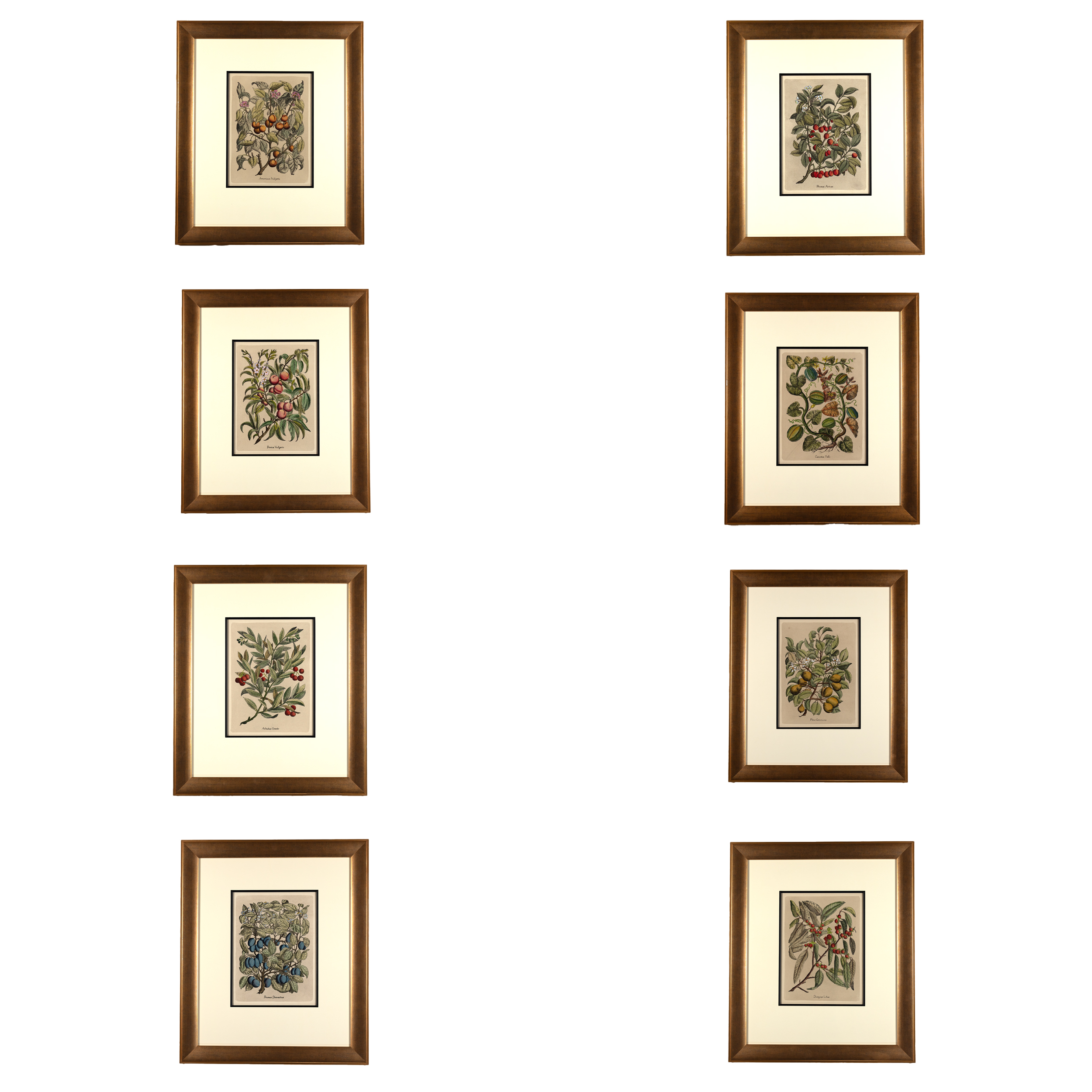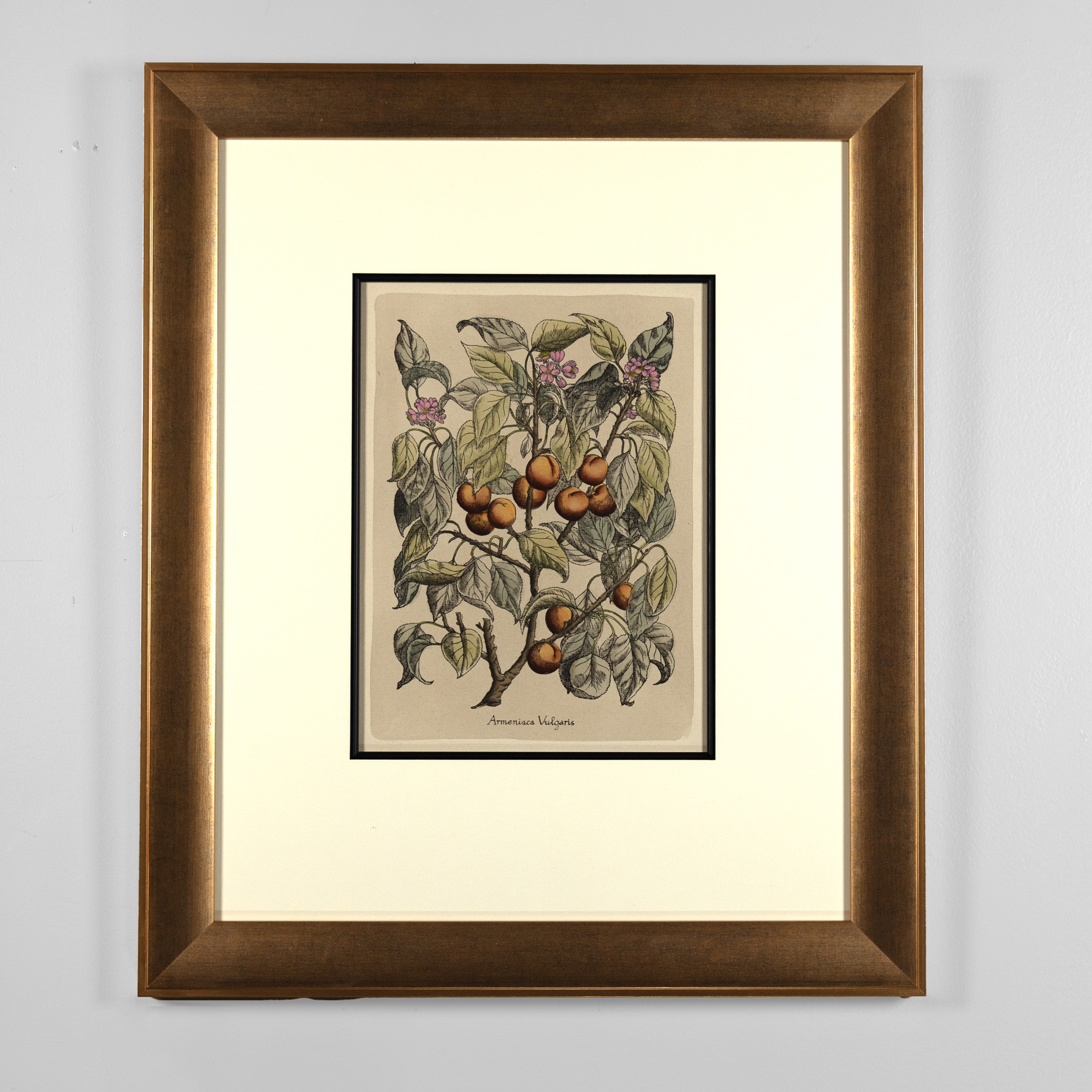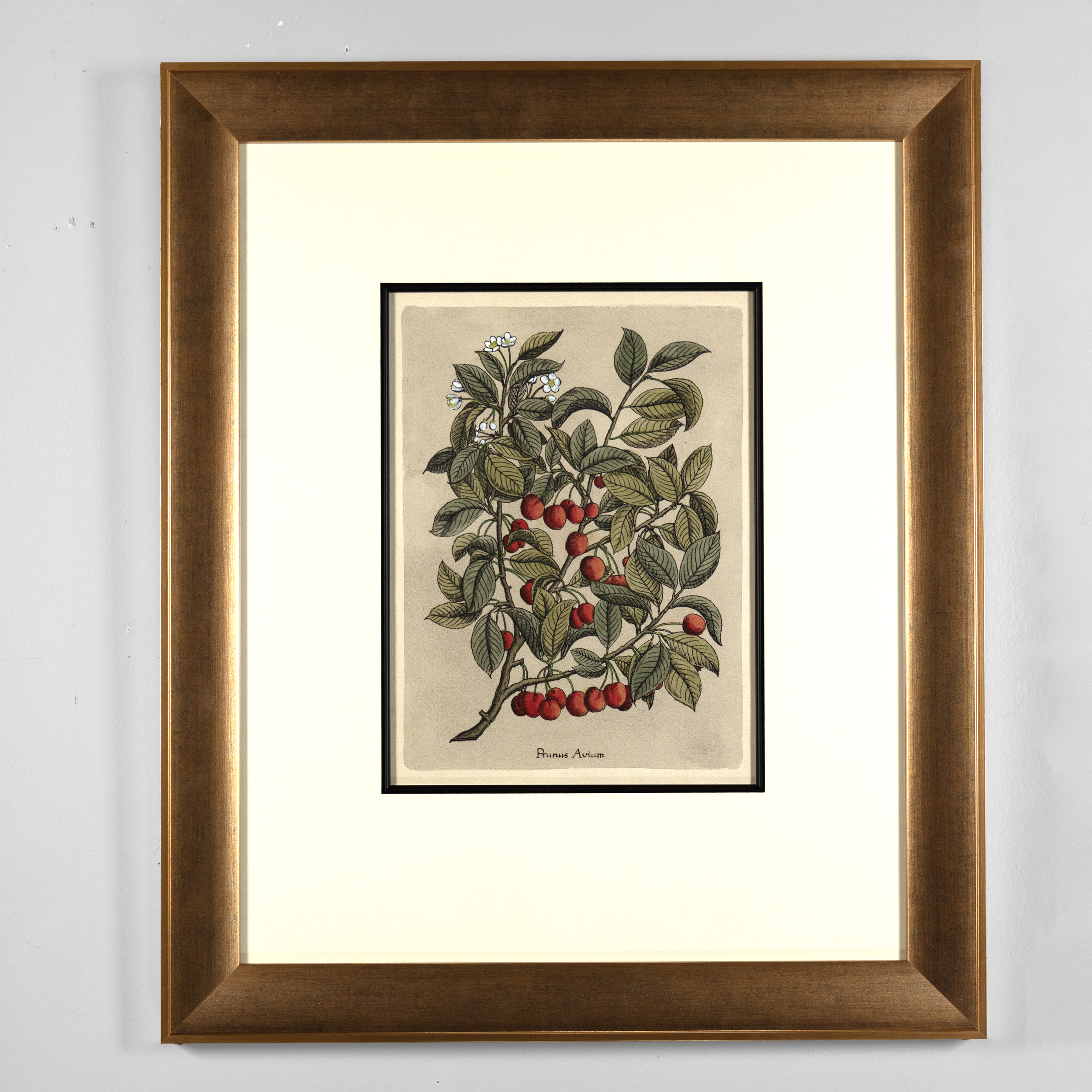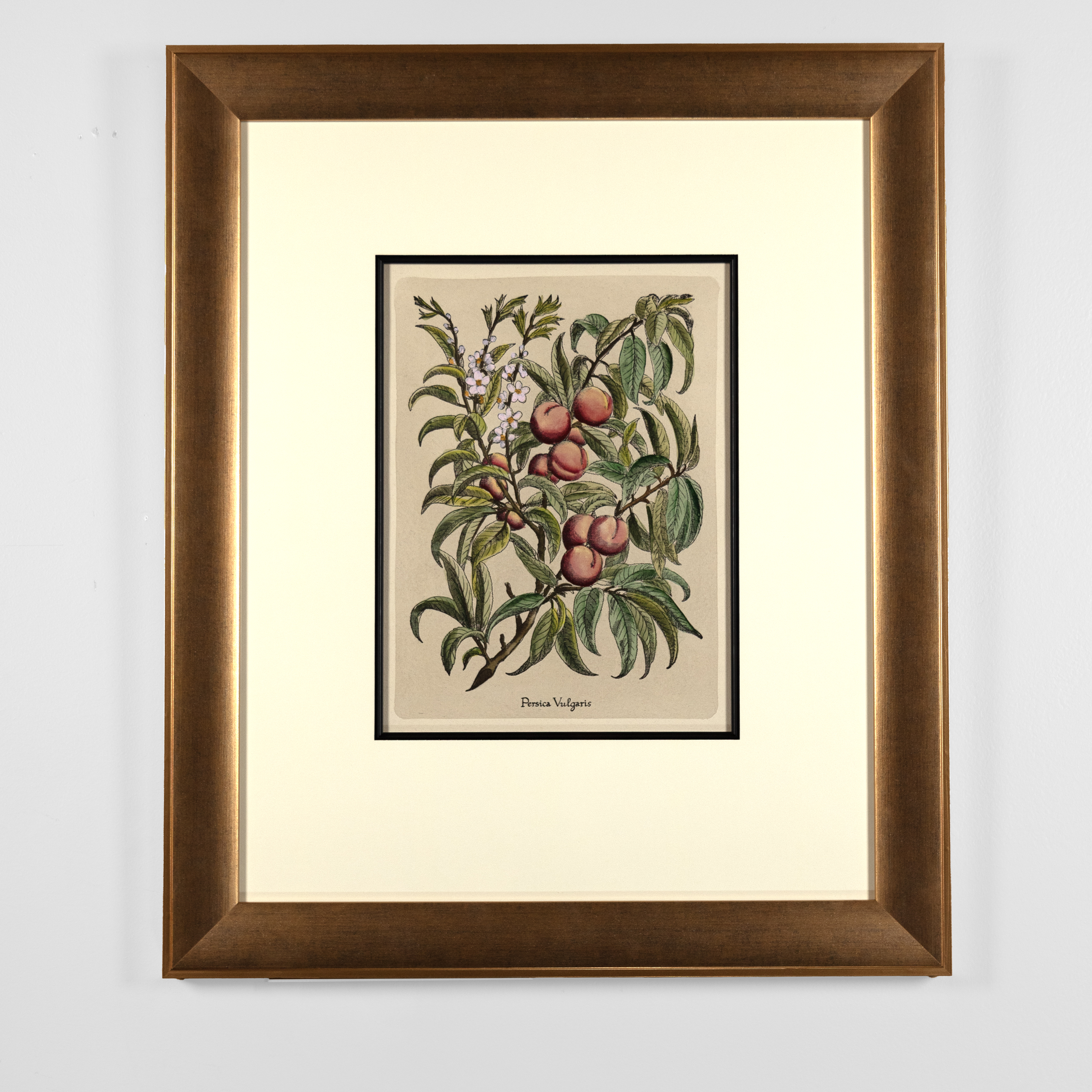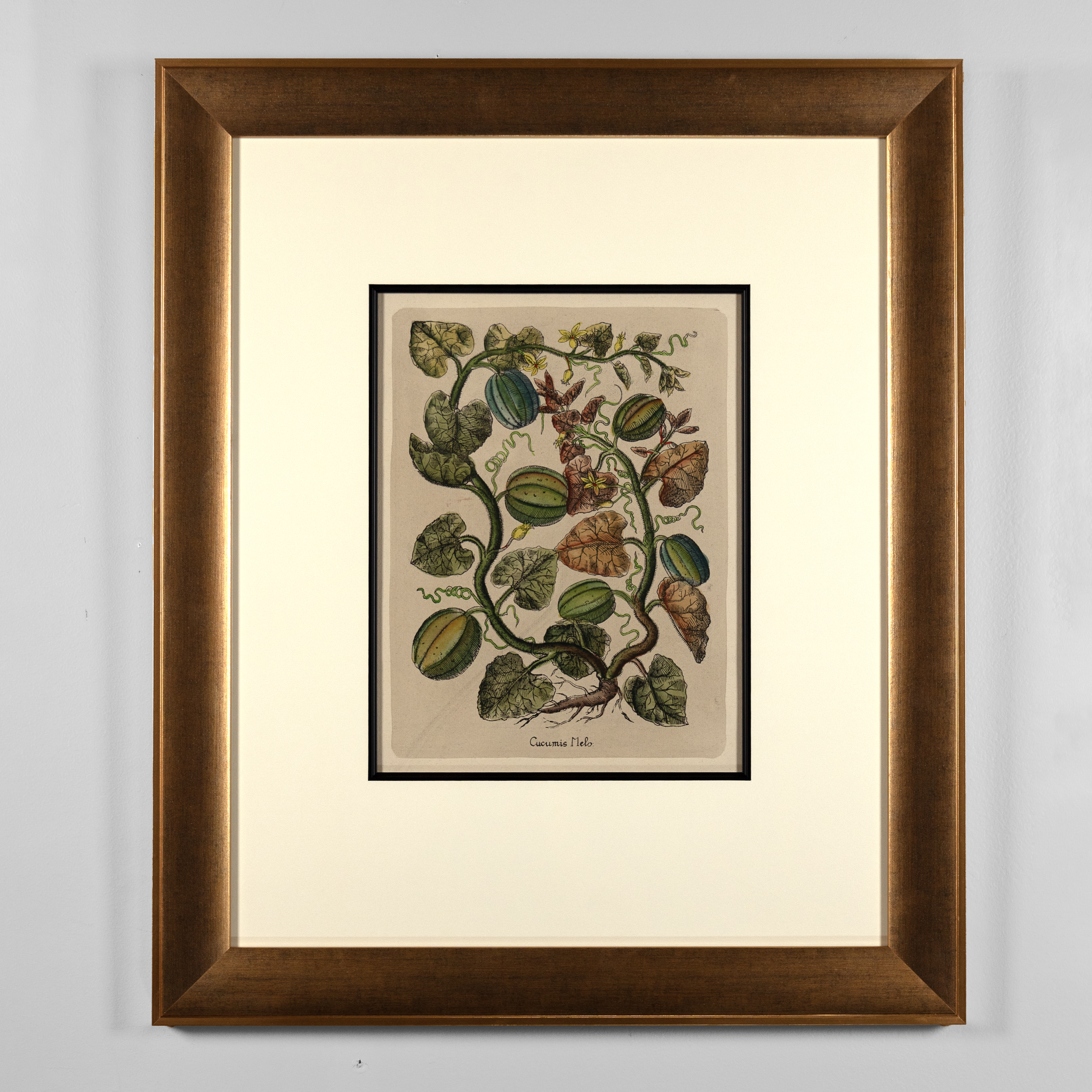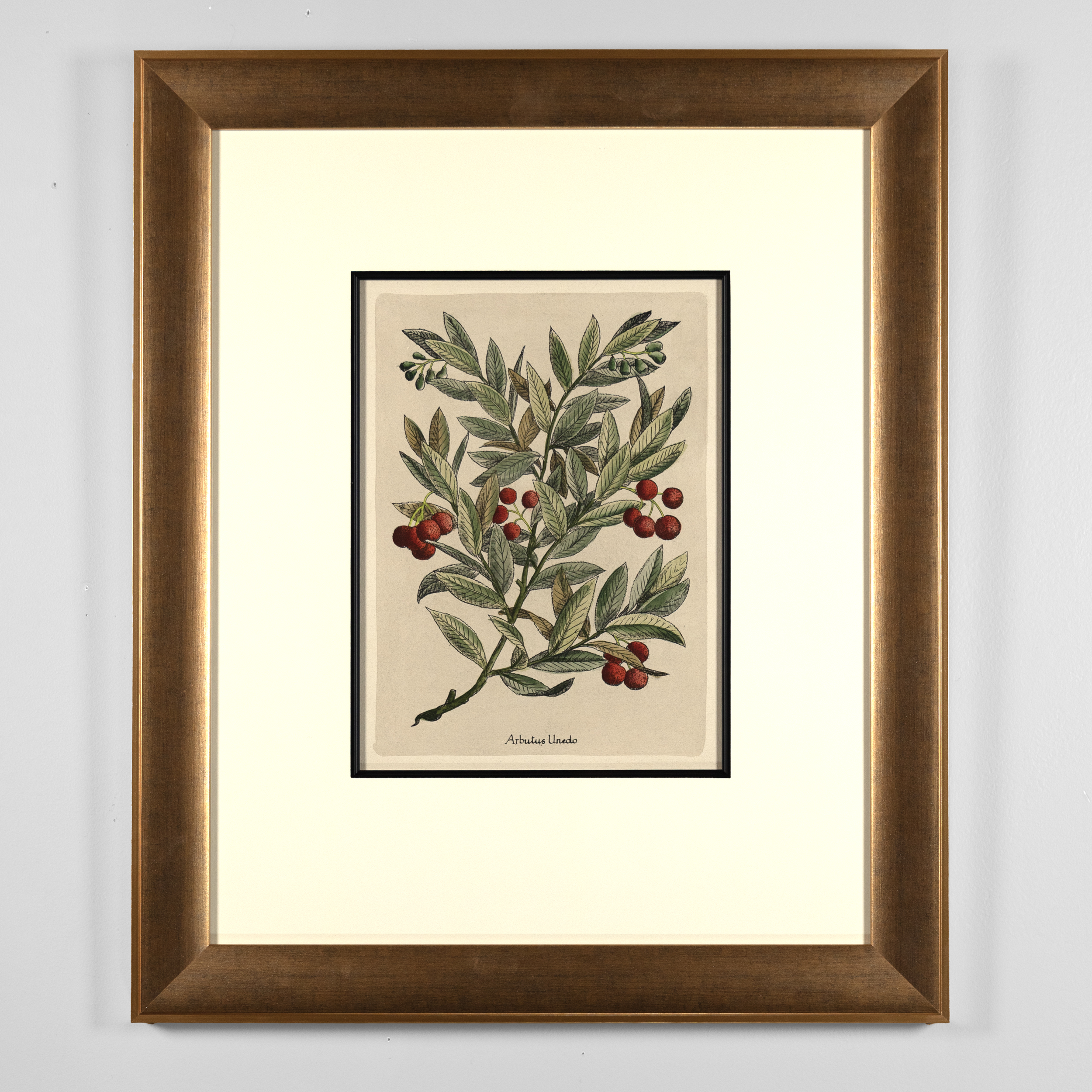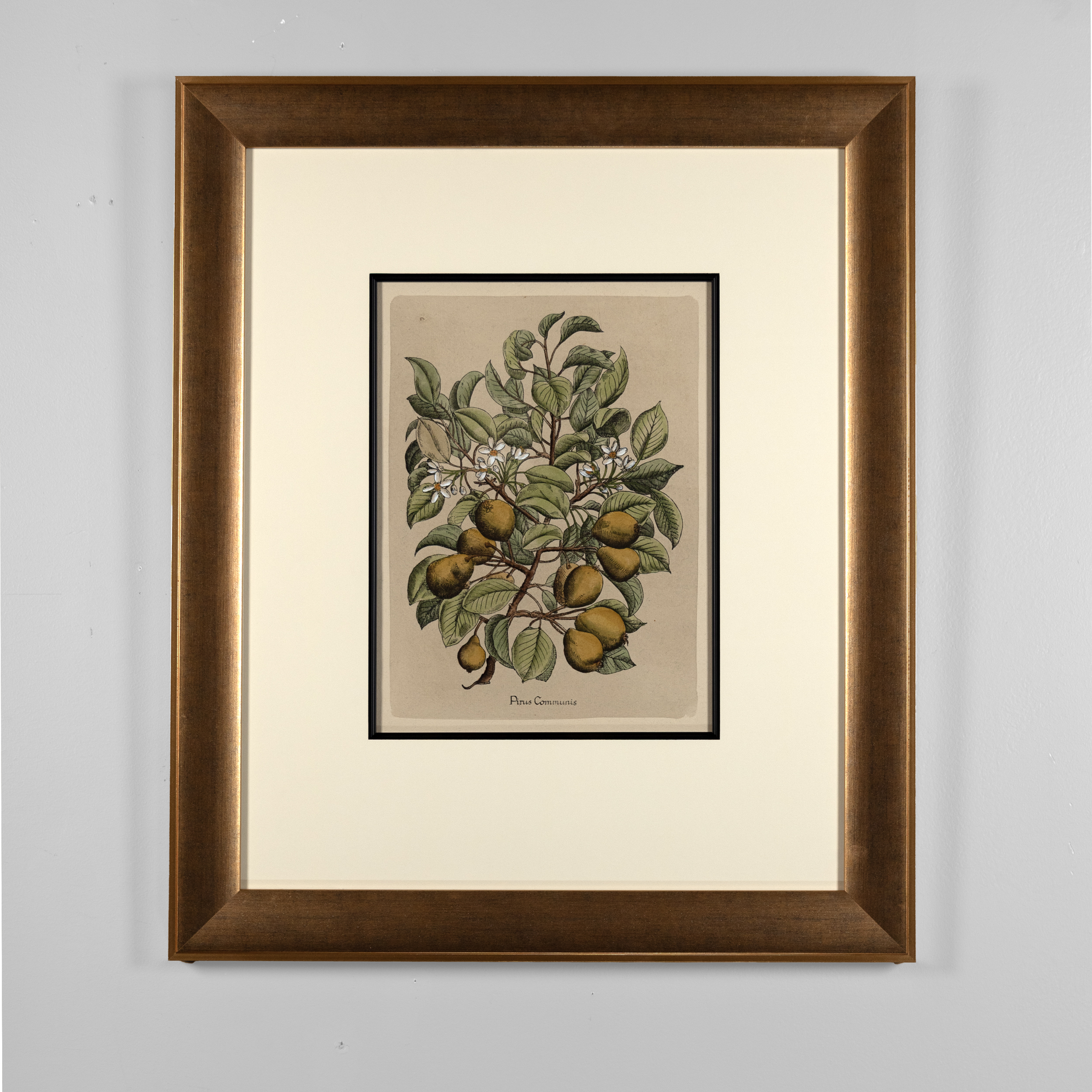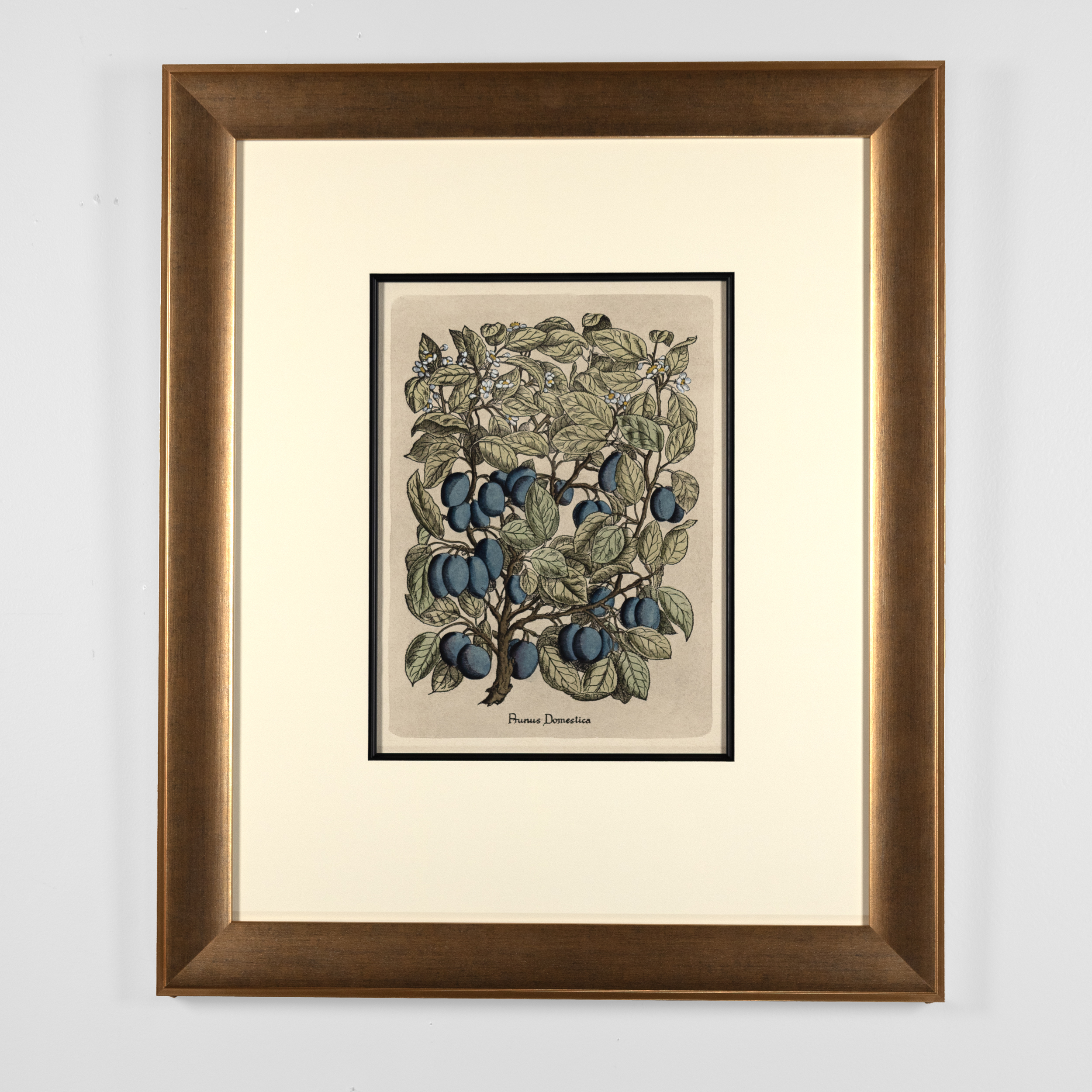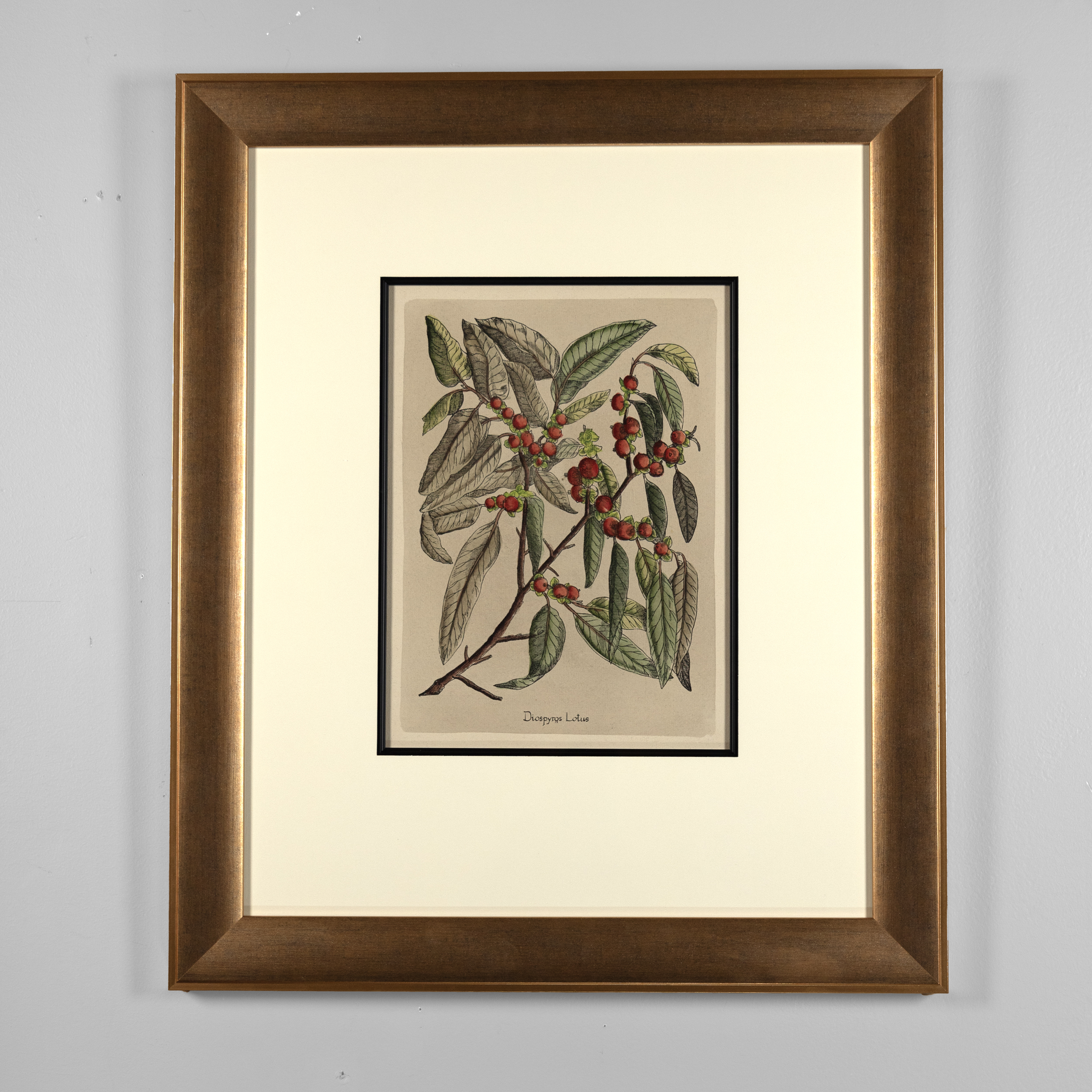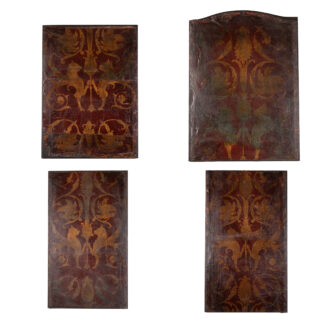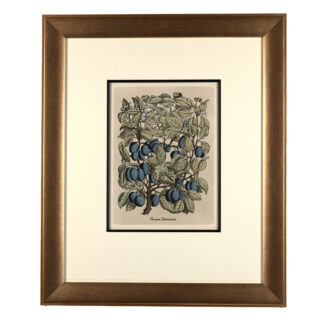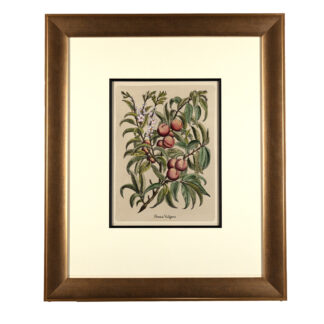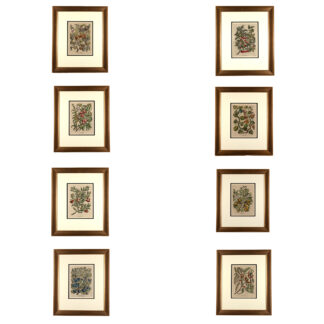Description
A collection of eight botanical lithographs from France, artistic renderings of botanical scientific study and illustration from the late 19th century. The prints are double matted and presented in gold frames; suitable for sophisticated interiors with historical and aesthetic value. 1
Each: height: 24.5 in. (62 cm),
width: 20.5 in. (52 cm),
depth: 2 in. (5 cm)each
Listed at $1,400 each, or $11,200 for the complete collection.
- Armeniaca Vulgaris (Common Apricot) the common apricot with velvety skin and spring blossoms.
- Prunus Avium (Wild Cherry): wild cherry with fruit and spring blossoms.
- Persica Vulgaris (Common Peach): the common peach, with its velvety skin.
- Cucumis Melo (Melon): a variety of melon, with lush foliage and segmented fruit.
- Arbutus Unedo (Strawberry Tree): the strawberry tree, recognized with red berries and leaves.
- Pyrus Communis (Common Pear): the common pear, with teardrop-shaped fruit and slender leaves.
- Prunus Domestica (Common Plum): the common plum, with its deep-colored fruits and foliage.
- Diospyros Lotus (Date Plum): the date plum with small, round fruits and leaves.
Further readings and sources:
- Binomial nomenclature, the formal system of naming species of living things, was developed by Carl Linnaeus in the mid-18th century. Each species is assigned a unique two-part name: the genus name, which is capitalized, and the species name, which is not. This system, introduced in Linnaeus’ seminal work ‘Species Plantarum’ in 1753, brought a standardized and consistent method to the classification and naming of plants and animals, which is still the cornerstone of modern taxonomy. The nomenclature serves as a universal language among scientists and scholars, allowing for clear and precise communication regarding biological research. The enduring legacy of Linnaean taxonomy is evident in these exquisite botanical lithographs, where the artistry of the past converges with scientific discovery.
See The Father of Taxonomy, Science, Source: Roy Porter, Ed., The Biographical Dictionary of Scientists (Oxford University Press, ed. 2, 1994). link: The Father of Taxonomy ↩

